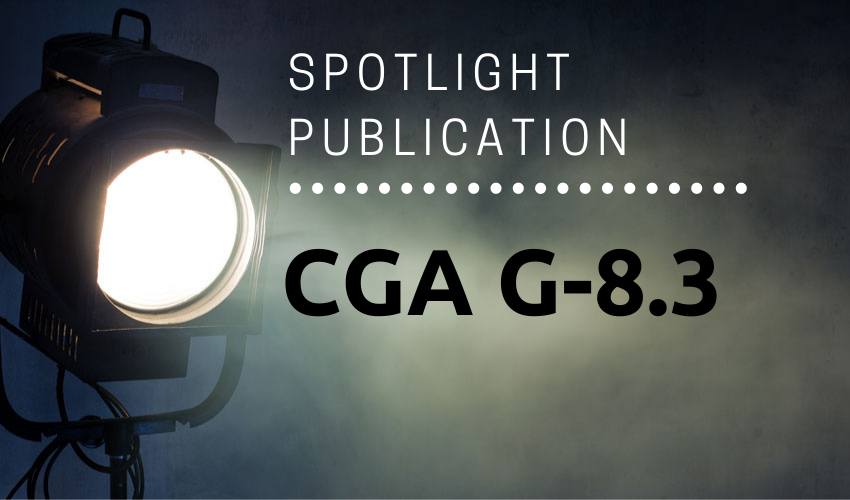CGA’s G-8.3 Publication Provides for Safe Storage and Distribution of Nitrous Oxide
February 3, 2021
Now in its 3rd edition, safety publication CGA G-8.3, Safe Practices for Storage and Handling of Nitrous Oxide from the Compressed Gas Association (CGA), describes the principles and relevant details of the safe storage, handling, and distribution of nitrous oxide, as well as its properties and hazards.
Nitrous Oxide – Overview
Nitrous oxide (N2O) has been produced and distributed by the industrial gas industry for many years. It is commonly used as a medical gas, for anesthesia and analgesia, and for cryosurgery. In addition, nitrous oxide is used as an oxidizing gas for chemical manufacturing, semiconductor manufacturing, and as a fuel oxidant for racing vehicles. It is also used as a propellant for pressure or aerosol products, with whipped cream being one common example.
At room temperature and atmospheric pressure, nitrous oxide is a colorless gas with a barely perceptible sweet odor and taste. It is nonflammable but will support combustion.
Incidents such as violent decomposition of nitrous oxide and the rupture of nitrous oxide tanks have occurred at production, storage, and distribution facilities. In addition, nitrous oxide gas, in elevated concentrations, can cause health effects in personnel.
Most severe incidents have been caused by insufficient understanding of the properties of nitrous oxide.
What’s Covered in CGA G-8.3
CGA G-8.3 edition 3 addresses the safe use in the industrial and medical gases industry for the design, engineering, construction, and operation of nitrous oxide, storage, and supply installations.
Personnel handling nitrous oxide should be trained in the hazards associated with this product. There are several conditions in which danger to personnel and equipment can exist. This safety publication reviews these conditions and offers procedures and guidelines to prevent dangerous conditions from developing. Information provided in CGA G-8.3 includes nitrous oxide physical properties and hazards; chemical properties and hazards; occupational exposure; environmental issues; and security.
Equipment used in nitrous oxide service shall be designed to withstand maximum operating pressures and temperatures and to minimize the release of nitrous oxide. Because of the properties and hazards of nitrous oxide, consideration shall be given to avoid combustible materials and any uncontrolled heat input. In addition, the equipment used to handle nitrous oxide shall be designed, constructed, and tested in accordance with the regulatory requirements in the country in which the equipment is operated.
This safety publication reviews equipment and procedures appropriate for use with nitrous oxide, including:
- Compatibility of materials with nitrous oxide
- Cleaning of installations
- Prevention of contamination
- Avoiding high temperatures
- Operating and maintenance procedures
- Isolation from flammable gases
CGA G-8.3 also provides information about the safe design and use of nitrous oxide supply systems, including:
- Stationary tanks used in nitrous oxide production plants, filling plants, and customer installations
- Cylinders dedicated to nitrous oxide service
- Cylinder and cylinder bundle filling stations designed and built to withstand the pressure and external loads during service to allow safe filling
- Refrigerated liquid nitrous oxide transfers from a stationary tank at the production plant into the transport tank and then transported to the user
In addition, this safety publication reviews principles for emergency response, including:
- Procedures for large leaks or spills of nitrous oxide
- Procedures at fire stations
- Procedures at traffic incidents involving transport tanks
- Personal protective equipment
- First-aid
The full Table of Contents may be downloaded for free from the CGA G-8.3 publication details page on the CGA portal.
Required Compliance
The design and installation requirements and recommendations included in CGA G-8.3 apply to installations begun after the publication date of this edition, which was November 5, 2019. Some design and installation requirements shall be considered for existing installations where specified in this publication. These requirements shall be completed within 2 years of publication of this standard. Operational requirements and recommendations included in this publication should be considered for existing installations.


